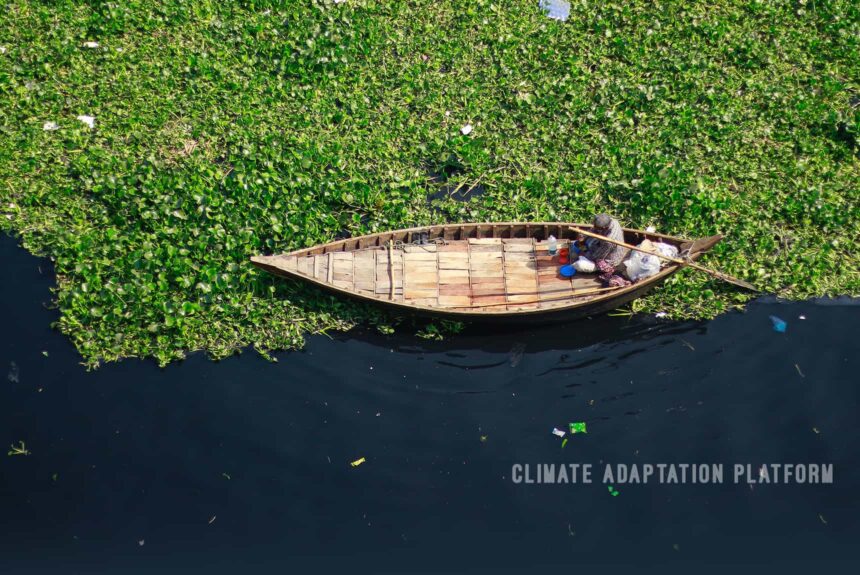Bangladesh is highly vulnerable to climate change effects as a developing country, a delta, and a country with a low adaptive capacity and direct exposure to natural disasters and climate change impacts.
Migration or relocation is Bangladesh’s most common form of climate adaptation. But mass migration to the Northern parts of India due to climate has resulted in tension and conflict among ethnic groups. Those from poor households, informal settlers, and those living in coastal and low-lying areas are at high risk.
The paper “Climate change adaptation in Bangladesh: Current practices, challenges and the way forward” reviews the effects of climate change on different aspects, such as agriculture, groundwater, livelihood and health in Bangladesh. It also summarises possible adaptation practices and challenges.
Bangladesh must implement sustainable adaptation practices to cope with climate change and reduce impacts on livelihood, agriculture and the environment. For these to be successfully carried out, the study says they first need to identify and address adaptation barriers.
The paper notes that there has been a notable increase in the frequency and intensity of extreme events in Bangladesh in recent decades. Mean temperatures have been rising at 0.20°C per decade. There has also been an increase in annual rainfall of 153mm between 2011-2020, except in winter, which is getting cooler and drier. The rest of the year is getting warmer and wetter.
Climate change effects on Bangladesh’s groundwater and farming, cities and migration, public health, and women are noted in the study.
As 60% of people in coastal areas depend on agriculture for their income, climate change effects increase their vulnerability. Climate change depletes groundwater supplies, while salinity intrusion is decreasing rice crop yields. It also forces some farmers to switch to aquaculture because of that.
Stresses from climate change drive people from rural areas to move to the cities for work – 90% of rural migrants permanently settle in Bangladesh’s urban centres like Dhaka, Chattogram, Khulna, and Raj Shahi. These rural migrants tend to face poor housing conditions, mostly as informal settlers, much higher crime rates, low wages, lack of sanitation, and polluted drinking water, among other things, in Bangladesh’s urban areas. In addition, the expansion of built-up areas in cities is raising the temperature in cities. Rural mass migration in cities also overwhelms the cities’ infrastructure and public health, which is beyond their capacity.
The scarcity of safe freshwater and pollution, directly and indirectly affects health. Climate change is making uncommon diseases prevalent in Bangladesh. Water-borne and water-related diseases are up to 11% higher in coastal areas. Contaminated groundwater is also associated with hypertension, premature delivery, and acute respiratory infections. Women are disproportionately affected when there is water scarcity.
Disasters, diseases, and lack of opportunities limit women’s potential to earn additional income. In Bangladesh, women are generally assigned to look for and provide water for their households. In coastal areas, many pregnant women are diagnosed with eclampsia, hypertension, and pre-eclampsia.
Barriers to Climate Adaptation in Bangladesh
Institutional obstacles combine with natural causes increase vulnerabilities and hinder adaptive capabilities in Bangladesh. There are two main barriers – problem identification and improvement of adaptation plans. Regarding problem identification, the country has insufficiency in the following: political desire, pressure from people, budget and available resources, knowledge of climate change impacts, and governance with proper implementation. Regarding the improvement of adaptation plans, the country needs more cooperation among stakeholders, financial support, and a sense of urgency to act.
The challenges identified in the study indicate that Bangladesh has a lot of work ahead of them and that they need to start addressing these issues and vulnerabilities to reduce climate impacts and associated socio-economic losses. Below are the study’s recommendations:
The specific aim of adapting to climate change under an inclusive process should be confirmed and reflected in national policies. Additionally, proper governance and budget allocation should be ensured.
- The rights of displaced persons need to be ensured to address their survival and physical security − especially in slum areas. In addition, legal recognition and protection should be offered to climate-induced migrants to ensure global accountability.
- A climate change resilient health care system needs to be developed and improved accessibility for vulnerable people.
- Access to safe drinking water should be secured to reduce health risks.
- The adaptive capacity of women should be prioritized from social, financial, political, and cultural perspectives.
- The application of local knowledge can promote adaptation in the local communities. Additionally, knowledge sharing among stakeholders can facilitate sustainable climate change adaptation and raise awareness across society.
The study’s findings on Bangladesh’s climate change vulnerabilities, barriers to adaptation, and recommendations to adapt to climate change can also inform other developing countries facing similar challenges and help them understand climate change from an adaptation lens.
The study’s findings can also inform other developing countries facing similar challenges and help them understand climate change from an adaptation lens.
Read the whole study by clicking the link in the “Source” section below.
Source:
Md. Arif Chowdhury, Md. Khalid Hasan, Syed Labib Ul Islam. (2022, May 6). Climate change adaptation in Bangladesh: Current practices, challenges and the way forward. The Journal of Climate Change and Health, Volume 6, 2022, 100108, ISSN 2667-2782. Retrieved from https://doi.org/10.1016/j.joclim.2021.100108



Leave a Reply